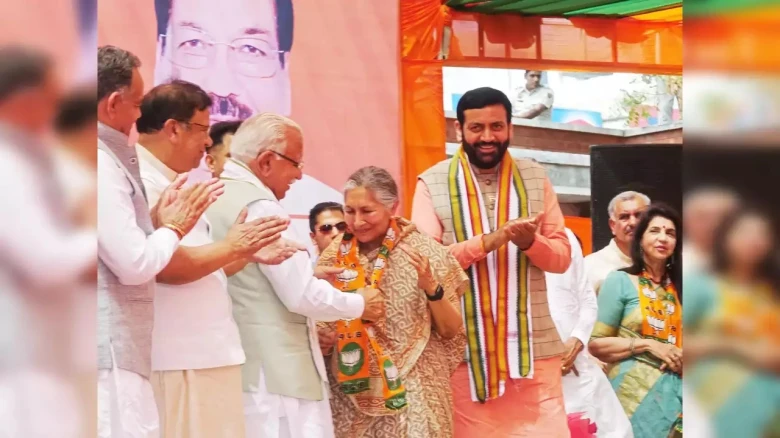The Jindal family's political realignment adds a compelling layer to the electoral dynamics...
Digital Desk: India's political landscape witnessed a significant shakeup as Savitri Jindal, the country's wealthiest woman, made a key move by officially joining the Bharatiya Janata Party (BJP) after resigning from the Congress party. Her decision, disclosed in a social media announcement late Wednesday, pointed to her commitment to serving the people of Hisar and her family's counsel as primary motivators behind her departure from Congress. Accompanying her in this transition was her daughter, Seema Jindal.
This move follows closely on the heels of her son, Naveen Jindal, also defecting from the Congress to join the BJP. Naveen Jindal, a former Member of Parliament, had represented Kurukshetra for ten years under the Congress banner. Subsequently, the BJP revealed plans for his candidacy in the upcoming 2024 Lok Sabha elections from Kurukshetra.
Expressing gratitude to the Congress leadership and former Prime Minister Dr. Manmohan Singh for their past collaboration, Naveen Jindal formally resigned from the Congress before aligning himself with the BJP at the party headquarters in New Delhi, alongside BJP's general secretary Vinod Tawde.
Naveen Jindal's political journey has been notable, marked by two successful terms representing Kurukshetra in the Lok Sabha under the Congress ticket.
However, a defeat in 2014 against BJP's Raj Kumar Saini led him to abstain from contesting in 2019. Notably, his parents, OP Jindal, and Savitri Jindal, have also held influential political positions in Haryana.
With the impending Lok Sabha elections set to unfold in seven phases over six weeks, from April 19 to June 1, with results slated for June 4, the Jindal family's political realignment adds a compelling layer to the electoral dynamics, promising an intriguing chapter in Indian politics

Leave A Comment